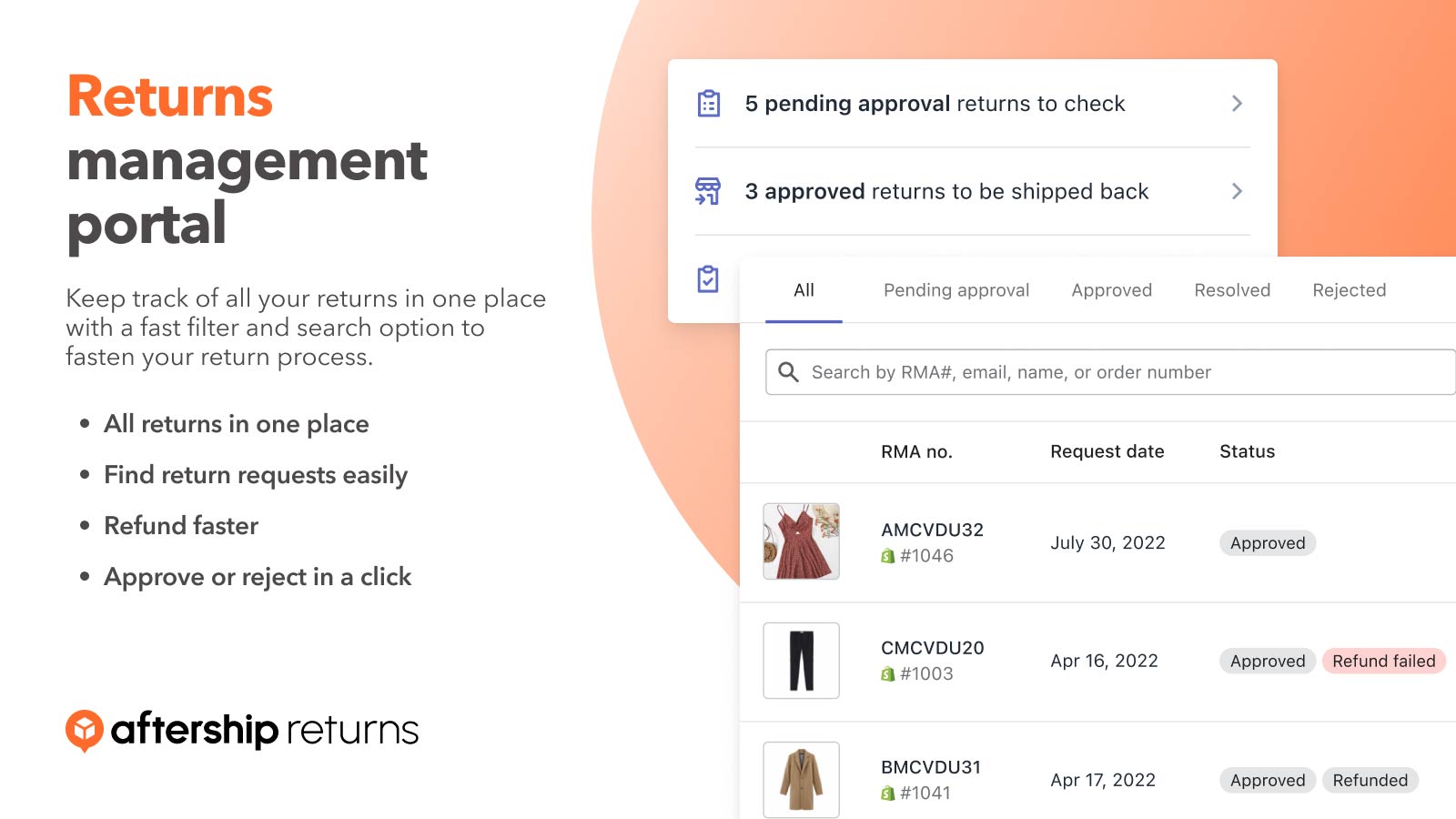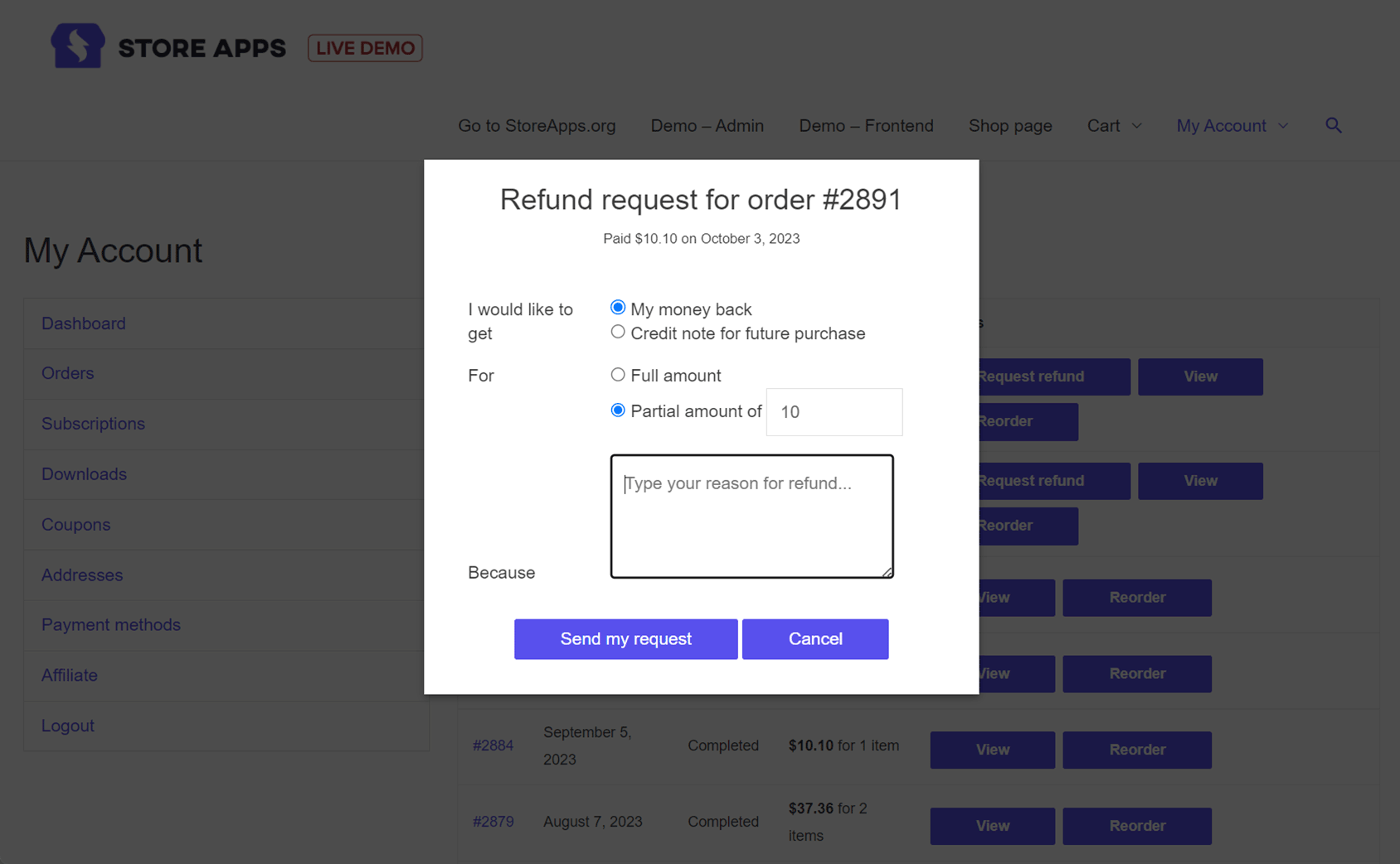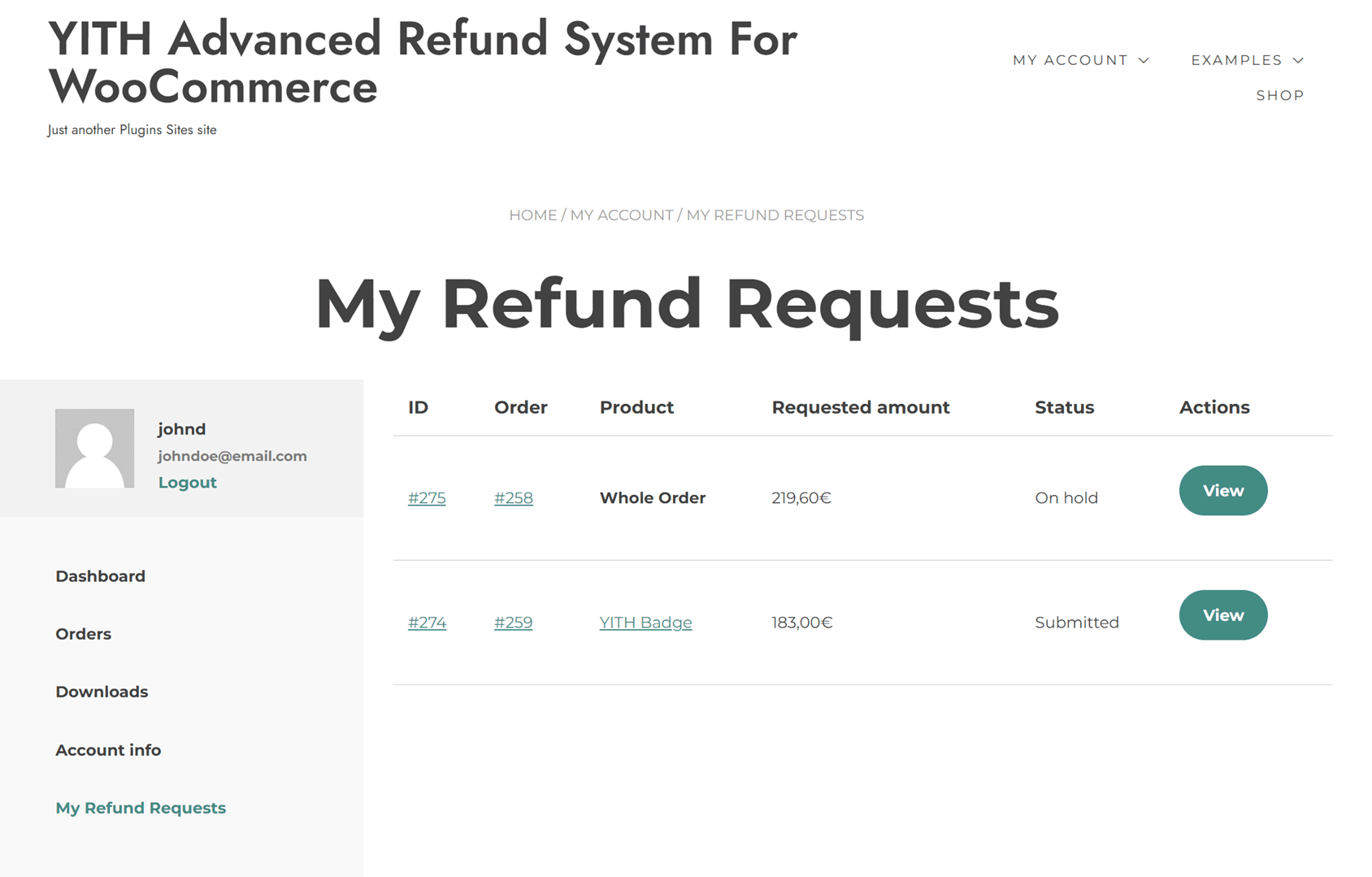Running an eCommerce store brings its fair share of challenges, and managing refunds and returns is definitely one of them.
However, this doesn’t have to be the resource-draining task you fear.
With the right approach and tools, you can streamline your refunds and returns process, making it both customer-friendly and efficient.
This guide is for those who are reluctant to offer refunds and returns or simply want to manage them better.
How do WooCommerce Refunds and Returns Work?
WooCommerce provides basic functionality for managing refunds and returns. However, for most stores, this is insufficient.
Not offering a hassle-free refund and return policy is a mistake, as customers often expect and look for these options. Plus, it’s a competitive edge that you wouldn’t want to miss.
A customer-friendly refunds and returns policy is not just about meeting expectations but also about complying with legal requirements in some cases.
How to Minimize Refunds and Returns
While some refunds and returns are inevitable, there are strategies to minimize their frequency:
- Detailed Product Descriptions: Ensure your product descriptions are accurate and informative. Include high-quality images, videos, sizing guides, user manuals, and assembly instructions to help customers make informed decisions.
- Publish Customer Reviews: User-generated content like customer reviews provides valuable insights for shoppers, helping them gauge if a product meets their needs.
- Accessible Pre-Sales Support: Offer opportunities for potential customers to ask questions. This could be through live chat, phone support, or a Q&A section on your product pages.
- Proactive After-Sales Support: Good after-sales support can include post-purchase emails with additional product information or reminders to use the product, increasing the likelihood of customer satisfaction and retention.
Tools for Managing Refunds and Returns in WooCommerce
To bolster the limited in-built functionality of WooCommerce, consider these specialized plugins:
WooCommerce Integration with AfterShip Returns
This plugin integrates your WooCommerce store with AfterShip, automating and simplifying the return and exchange process.
Customers can initiate returns through a portal connected to your store after registering with AfterShip. The system can be configured for manual or automated return approvals based on set rules.
AfterShip collaborates with various couriers, offering flexibility in choosing shipping providers and automatically generating prepaid shipping labels.
It also sends automated updates about return progress, reducing customer inquiries.
Additionally, the AfterShip integration aids in managing shipping costs, tracking orders, updating delivery statuses, and automating pre and post-sale emails, among other functionalities.
WooCommerce Smart Refunder
The WooCommerce Smart Refunder extension enables customers to request refunds directly from their account area.
It allows for automatic, instant refunds if your settings and payment gateway support it. Alternatively, you can opt for manual approval of refunds for greater control.
The extension also handles scenarios where refunds aren’t supported by your payment gateway, offering manual processing.
We’ve put together this article on How to Pick The Best Payment Gateway for Your WooCommerce Store to ensure that you don’t face difficulties in picking the right payment gateway for your business.
For those preferring to offer store credit, it integrates with the Smart Coupons extension, encouraging customers to keep their spending within your store.
This self-service feature reduces administrative workload, streamlining the refund process for improved efficiency.
YITH Advanced Refund System for WooCommerce
The YITH Advanced Refund System for WooCommerce simplifies the refund process, allowing customers to initiate refunds directly from their account.
It offers flexibility, enabling refunds for entire orders or specific products, and lets store owners set a refund request period, like 30 days.
Refunds can be automatically or manually approved and processed via the original payment method or an alternative gateway. The system also supports issuing refund coupons, with options for full or partial refunds.
Additional features include setting minimum order values for refunds, automatic restocking of returned items, and email notifications for the refund process.
The system allows for both store-wide and individual product-level refund policies, suitable for non-returnable items.
It integrates seamlessly with other YITH WooCommerce extensions, covering a wide range of refund scenarios.
Improving the Refund and Return Process
Even with minimized refunds and returns, a smooth process is key to maintaining customer satisfaction.
Here’s how to enhance your refunds and returns process:
- Automate Where Possible: Use tools like AfterShip for automated processing of returns and refunds. This reduces the workload on your team and speeds up the process for customers.
- Clear Communication: Automated email updates keep customers informed about the status of their returns or refunds, reducing the need for them to contact customer support.
- Transparent and Accessible Policies: Ensure your refund and return policies are easy to find and understand. Clear guidelines prevent misunderstandings and set the right expectations.
- Legal Compliance: Make sure your policy complies with the legal requirements of the regions in which you operate.
- Hassle-Free Returns Portal: Integrations like AfterShip Returns create a user-friendly portal for customers to initiate returns, making the process straightforward and less daunting.
- Flexible Refund Options: Offer options like store credit (using extensions like Smart Refunder) to keep the money within your store while still satisfying customer needs.
- Analyze Return Reasons: Keep track of why items are being returned to identify any recurring issues, like sizing problems or misleading product descriptions.
- Feedback Loop: Encourage customers to provide feedback during the return process. This information can be invaluable for improving your products and services.
Turn Refunds Into Opportunities
Managing refunds and returns effectively is crucial for any WooCommerce store.
When it comes to Woo specifics, CoSpark has a dedicated team of WooCommerce developers ready to assist you in your journey to eCommerce success.
By implementing the right tools and strategies, you can transform refunds and returns from a business challenge into an opportunity to enhance customer satisfaction and loyalty.















